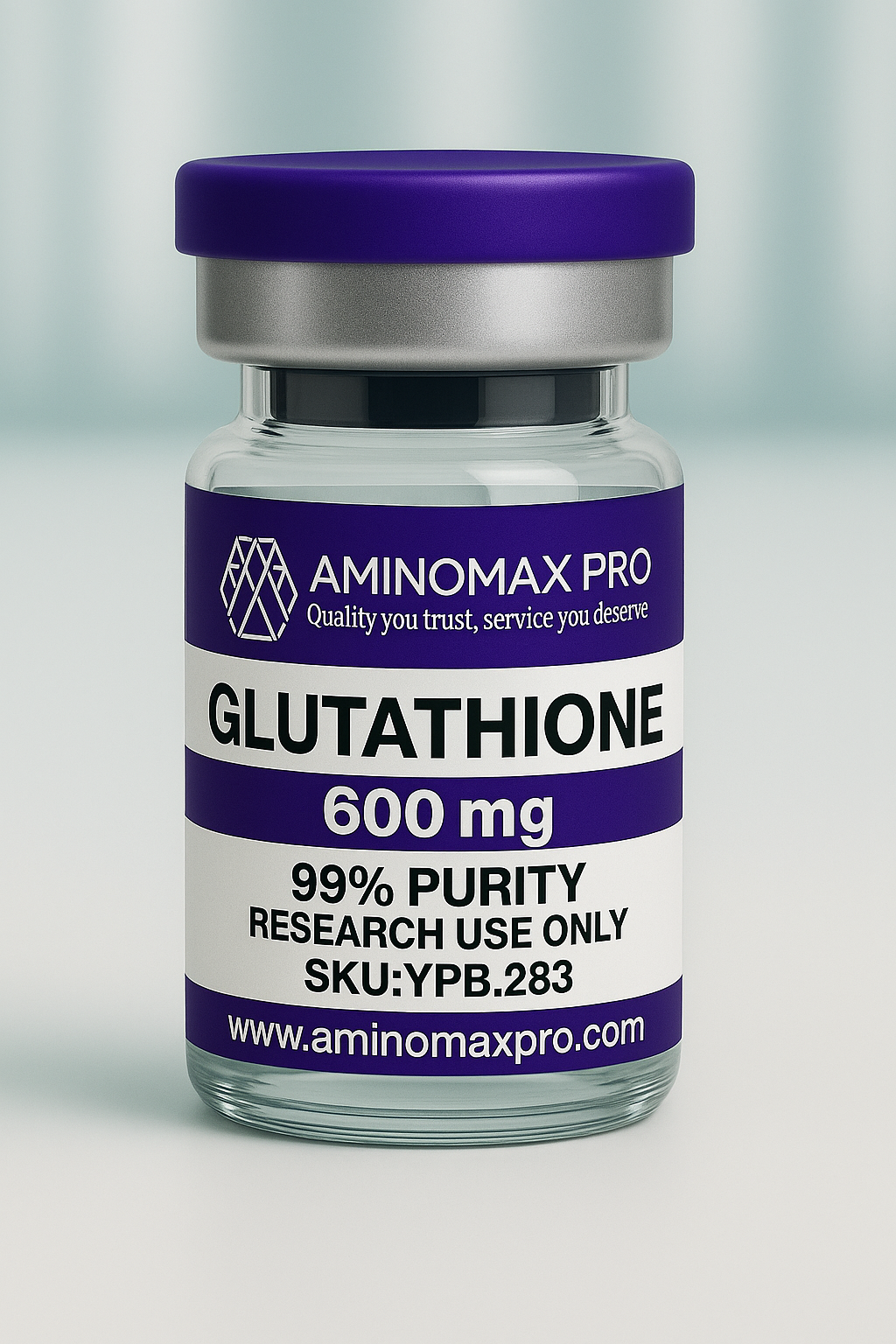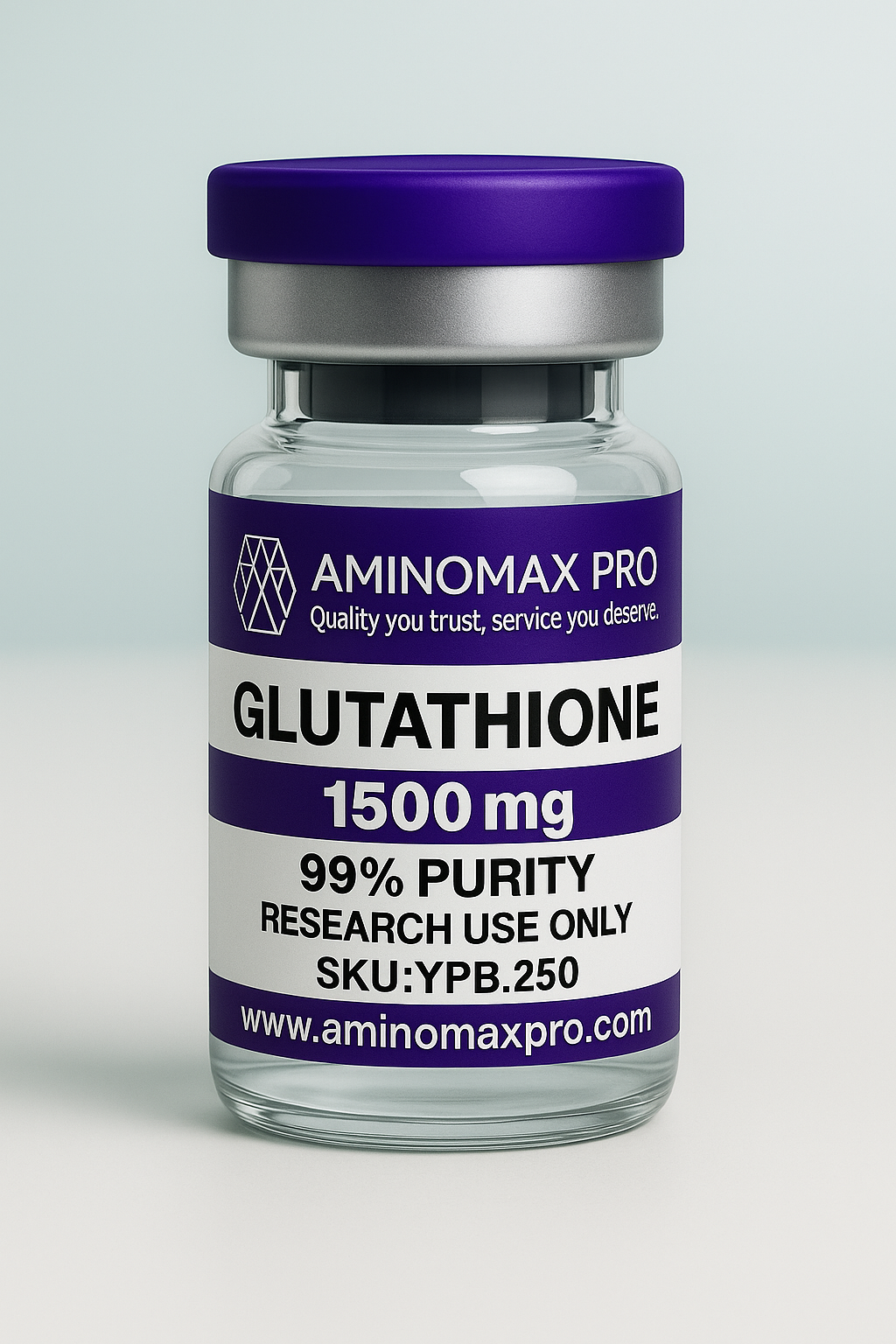Description
Glutathione – Advanced Biochemical Mechanism & Pathway Profile
(γ-L-Glutamyl-L-Cysteinyl-Glycine; Major Cellular Thiol Antioxidant)
Glutathione (GSH) is a tripeptide and the primary intracellular thiol redox buffer, existing in reduced (GSH) and oxidized (GSSG) states. It participates in antioxidant defense, detoxification, thiol–disulfide exchange, and gene-regulatory redox signaling.
✅ 1. Core Enzymatic System
Glutathione Peroxidase (GPx)
-
Catalyzes reduction of hydrogen peroxide and lipid hydroperoxides
-
GSH → GSSG
-
Selenium-dependent isoforms (GPX1–GPX4)
Glutathione Reductase (GR)
-
Regenerates GSH from GSSG
-
Uses NADPH from pentose phosphate pathway (G6PD/6PGD)
Glutathione S-Transferases (GSTs)
-
Conjugate GSH to electrophilic xenobiotics
-
Phase II detoxification system
γ-Glutamyl Cycle / Synthesis Enzymes
-
Glutamate-cysteine ligase (GCL / GCLC / GCLM)
-
Glutathione synthetase (GSS)
✅ 2. Antioxidant & Redox Signaling Pathways
Nrf2/Keap1 Pathway (Master antioxidant response)
GSH regulates cytosolic redox state, affecting oxidation of Keap1 cysteines → release of Nrf2, which translocates to the nucleus.
Nrf2-regulated antioxidant genes:
-
SOD1, CAT, GPX4, GCLC, NQO1, HMOX1
-
Phase II detoxification genes (GSTs, UGTs, MRPs)
NF-κB Redox Regulation
-
High GSSG or low GSH/GSSG ratio promotes IκB kinase activation
-
GSH buffering can modulate NF-κB-dependent cytokine genes:
-
TNF-α, IL-6, IL-1β, COX-2
-
✅ 3. Mitochondrial Pathways
Mitochondrial GSH regulates:
-
Complex I and III ROS leakage
-
Cardiolipin peroxidation
-
Cytochrome-c release
-
Caspase activation cascade
Experimental models show protection of mitochondrial membrane potential by maintaining redox balance.
✅ 4. Detoxification, Conjugation & Transport
Phase II Metabolism
GST-mediated conjugation → glutathione-conjugates (GS-R) exported by MRP2/ABCC2 transporters.
Glutathione Peroxidase-4 (GPX4) & Ferroptosis
-
GSH required for GPX4 activity
-
Limits phospholipid hydroperoxides
-
Prevents ferroptotic signaling in cell models
Key gene markers:
-
GPX4, SLC7A11 (xCT transporter), GCLC, ACSL4
✅ 5. Protein S-Glutathionylation
GSH modifies protein cysteine residues, altering:
-
Enzyme activity
-
Ion transport
-
Signal transduction
Reversed by glutaredoxin (GRX1/2) enzymes.
✅ 6. Summary of Core Enzymes & Pathways
| Biochemical System | Key Components |
|---|---|
| Synthesis | GCLC, GCLM, GSS |
| Recycling | Glutathione reductase, NADPH |
| Antioxidant Defense | GPX1–GPX4, Catalase, Prx/TRX systems |
| Detoxification | GST family, MRP efflux transporters |
| Redox Signaling | Nrf2/Keap1, NF-κB, S-glutathionylation |
| Cell Fate Pathways | Ferroptosis suppression (GPX4), Caspase inhibition |
✅ Key Genes Commonly Monitored in Research
-
GCLC, GCLM (rate-limiting synthesis)
-
GPX1–GPX4 (antioxidant enzymes)
-
HMOX1, NQO1 (Nrf2 targets)
-
SLC7A11 (cystine/glutamate transporter)
-
MRP2/ABCC2 (export of GSH conjugates)
-
TNF-α, IL-6, COX-2 (NF-κB-responsive cytokines)
Research-Only Classification
Glutathione is provided solely for in-vitro laboratory research and is not approved for human or animal consumption, injection, ingestion, or diagnostic or therapeutic purposes.



